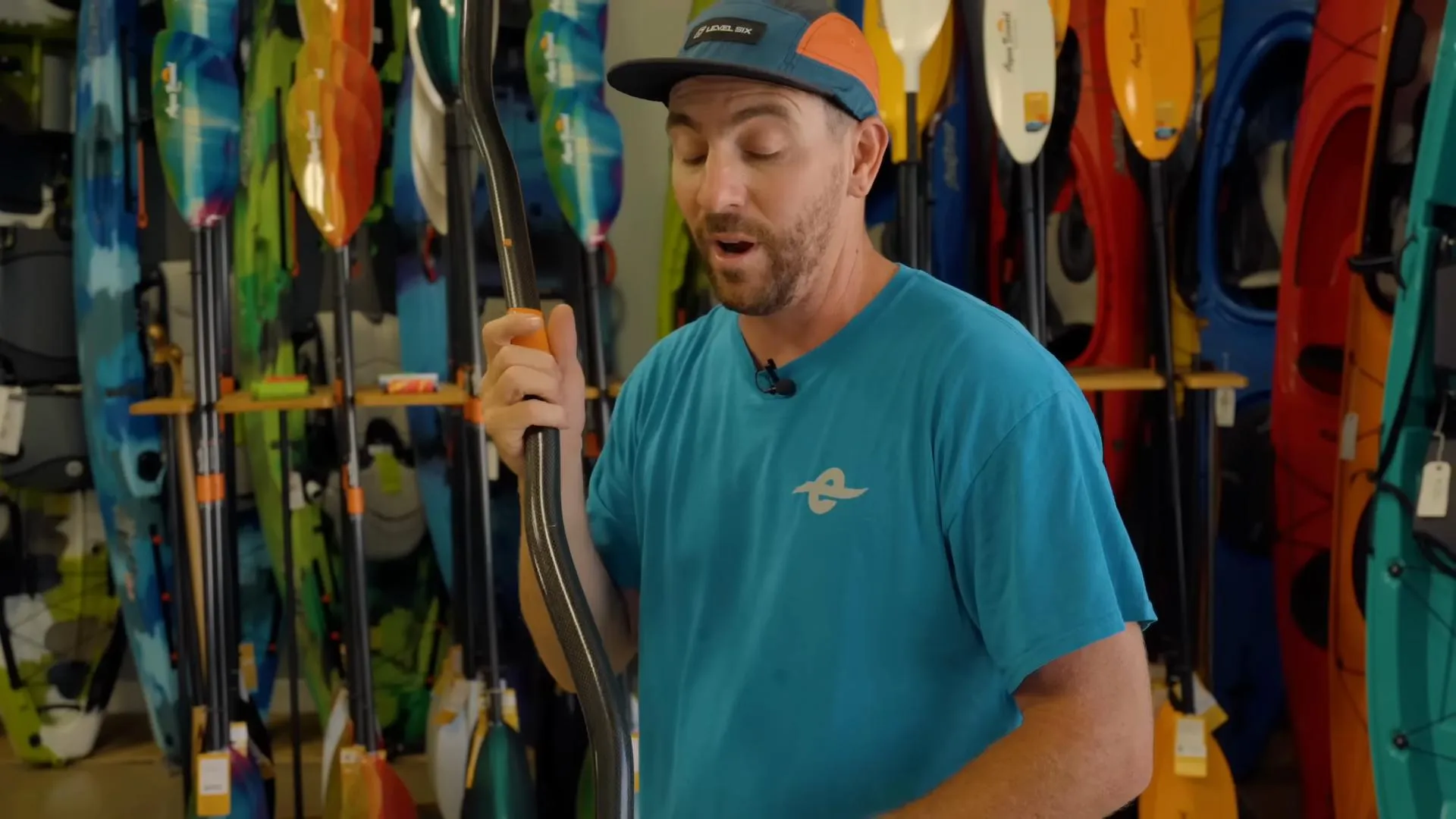The kayak paddles guide is essential for anyone looking to enhance their kayaking experience. Are you wondering what type of kayak paddle is best for your style? Or perhaps you’re curious about the materials used in paddles and how they affect performance? This guide will answer all your questions, helping you select the perfect paddle for your adventures on the water. Whether you’re a beginner or an experienced paddler, understanding the different paddle styles, materials, and features will make a significant difference in your kayaking experience.
In this article, we will cover everything from the basic types of paddles to the intricacies of paddle sizing. We aim to equip you with the knowledge necessary to make informed decisions, ensuring your time on the water is both enjoyable and efficient.
Comprehensive Kayak Paddles Guide: Understanding Paddle Styles
Low Angle vs. High Angle Paddling
One of the first things you’ll notice when shopping for paddles is the distinction between low angle and high angle styles. So, what do these terms mean?
- Low Angle Paddles: Ideal for leisurely paddlers who prefer a more relaxed stroke. The blade enters the water at a lower angle, which is easier on the arms and promotes a gentle rhythm.
- High Angle Paddles: Designed for aggressive paddling, these paddles allow for a more powerful stroke. The blades enter the water at a steeper angle, making them suitable for experienced paddlers seeking efficiency and speed.
Choosing the Right Paddle Material
Once you’ve decided on the angle, it’s crucial to understand the materials used in kayak paddles. The common materials include:
- Aluminum: A popular entry-level option, aluminum paddles are sturdy but can be heavy and uncomfortable in extreme temperatures.
- Fiberglass: A step up from aluminum, fiberglass paddles are lighter and provide better performance.
- Carbon Fiber: The lightest and most efficient option, carbon fiber paddles minimize swing weight and maximize stiffness, providing an excellent performance for serious paddlers.
Comparing Different Paddle Styles
For example, consider the Aqua Bound Sting Ray paddle, which comes in various materials:
- Aluminum shaft with nylon blades
- Hybrid model with carbon shaft and nylon blades
- Full carbon model with carbon-reinforced blades
Each option presents a different weight and performance level, making it important to test them out before making a purchase.
Key Takeaways for Choosing the Right Paddle
Understanding the key elements of kayak paddles will help ensure you select the right one for your needs. Here are some essential takeaways:
- Choose between low angle and high angle paddles based on your paddling style.
- Consider the weight and material of the paddle, as they significantly affect performance.
- Test different paddles in-store to find the best fit for your grip and comfort.
- Pay attention to paddle length and ensure it suits your kayak and paddling style.
The Importance of Paddle Sizing
Paddle sizing is another critical aspect that can influence your paddling efficiency. Ideally, the paddle length should correspond to your height, the width of your kayak, and your paddling style. Here are some guidelines:
- For high-angle paddlers, shorter paddles may be more effective.
- Wider kayaks typically require longer paddles.
- As a rule of thumb, if your paddle blade is fully submerged during a stroke, you likely have the right length.
Feathering: What You Should Know
Feathering refers to the angle of the paddle blades relative to each other. Most paddlers can benefit from feathering to reduce wind resistance while paddling. Beginners often start at a zero-degree feather and can progress to 15 or 30 degrees as they become more comfortable.
Advanced Paddle Features: Understanding Grip and Shaft Design
Different paddle grips and shaft designs can also enhance your paddling experience. There are straight and bent shaft paddles, each providing a unique feel and comfort level. A bent shaft paddle, for example, allows for a more neutral wrist position, which can help prevent strain during long paddling sessions.
Choosing Between Straight and Bent Shafts
- Straight Shaft: Offers versatility and is often favored by more experienced paddlers.
- Bent Shaft: Ideal for those who may experience discomfort in their wrists or forearms.
Understanding Paddle Width and Blade Shape
The width and shape of the paddle blade can affect your strokes’ efficiency and power. For instance, wider blades provide more surface area but can also create more drag. Conversely, narrower blades can glide through the water efficiently but require more effort for each stroke.
Final Thoughts on Selecting the Right Kayak Paddle
Choosing the right kayak paddle is crucial for an enjoyable and efficient paddling experience. As you explore various options, remember to consider your paddling style, the materials used, and the paddle features that best suit your needs. With the tips outlined in this kayak paddles guide, you are well-equipped to find the perfect paddle that enhances your time on the water.
For additional resources, consider checking out expert guides on paddle sizing and selection at Aqua Bound’s sizing guide and REI’s expert advice on kayak paddles. Happy paddling!




[…] well-marked dirt path guides you through dense shrubs and walnut groves—keep an ear out for local towhees—before leading you […]
[…] this ultimate guide, we’ll explore everything you need to know about the emerald cave kayak tour, from what to […]